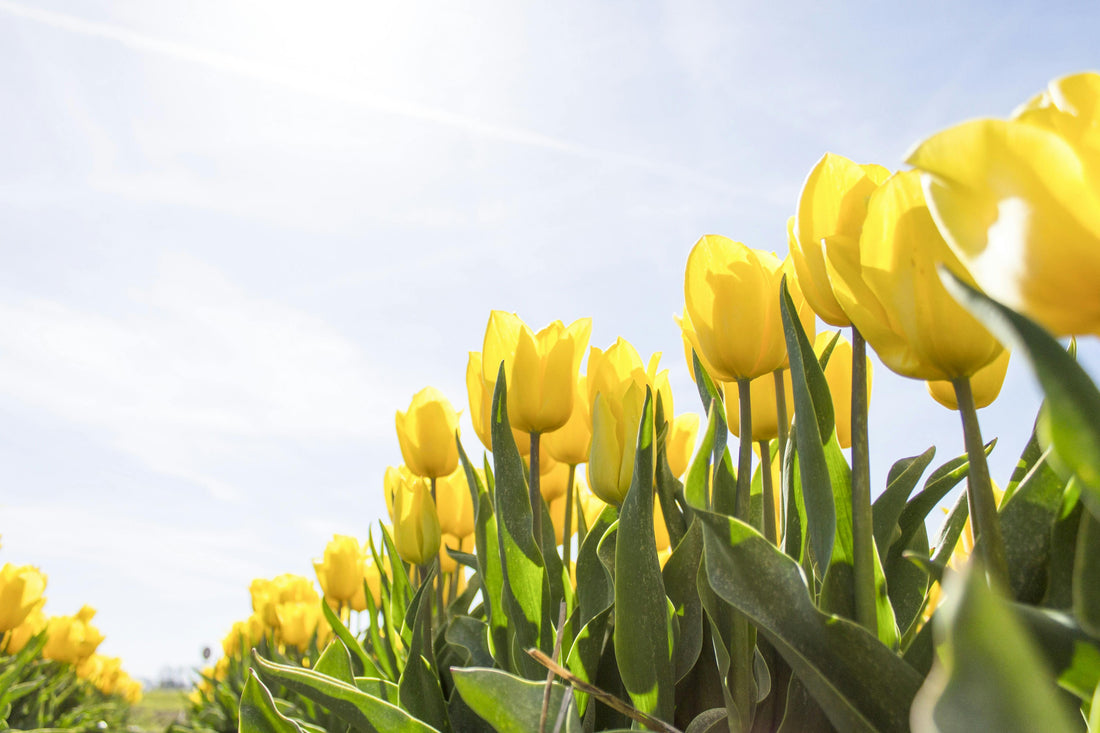Spring! It’s the season when daffodils burst into bloom, the days noticeably draw out and lambs start appearing in the fields. It’s also when we venture out into our gardens and generate more waste for the compost bin. So, if you don’t already own a compost bin, now is a great time to buy one!
Spring Composting
Although this list is by no means exhaustive, let’s take a look at what materials you might find in your garden to compost this Spring.
Early Spring (March)
Prune and compost:
- Buddleia to within 2-3 healthy buds on the new wood
- Last season’s growth on your Hydrangea
- Over wintered Pelargoniums
- Late summer flowering Clematis
- Established bush & standard Roses
- Dogwoods
- Conservatory climbers such as Plumbago
- Blueberry bushes – remove 1/3 of stems closest to the ground
- Shrubs grown for their large decorative leaves and coloured winter stems such as Catalpa, Cotinus, Paulownia, Cornus, White Wash Bramble (Rubus) and Willow
- Deciduous shrubs which bloom after autumn leaf fall such Viburnum, Daphne and Chimonanthus
Cut back and compost:
- Foliage on herbaceous perennials such as Crocosmia, Geraniums and Delphiniums
- Dead stems of ornamental grasses
- Old stems on evergreen shrubs such as winter flowering Camellias and Hollies
Clear away and compost: any debris or dead plants from the winter crops
Mow the lawn if the ground is not too wet. For the first cut of the year, mow the lawn on the highest blade setting and compost the grass cuttings. Don’t forget to add plenty of shredded paper and bulking agent though to stop it from going anaerobic and turning to a black slime!
Harvest: Last of the winter veg including parsnips and leeks whose trimmings can be added into the HOTBIN
Mid Spring (April)
Prune and compost:
- Early flowering shrubs once the blooming ends have faded such as Forsythia, Abeliophyllum Distichum and Chaenomeles
- Evergreen shrubs and hedges such as Photinia, Griselinia and Prunus Lusitanica can be hard pruned
- Young stone fruit trees such as cherries and plums as the leaf buds open
- Well established Cotinus (Smoke Bush), prune whilst dormant to maintain shape.
Cut back and compost:
- Topiary Box and Heather
- Penstemons
- Lavender – remove old flower stems
- Salix and Cornus
Remove and compost frost damaged shoots from flowering shrubs and flowers from strawberry plants planted after September last year
Hoe beds and borders to remove weeds before they develop a large and complex root system. Only add weeds into your HOTBIN if it is operating above 40°C
Deadhead and compost Primroses and Camellias and remove faded Daffodil and Tulip heads
The lawn: Mow the lawn on a dry day – grass is very wet waste so don’t forget to add bulking agent and shredded paper and add in any thatch or moss from scarifying the lawn too
Late Spring (May)
Prune and compost:
Spring flowering:
- Clematis - after flowering if you need to control their size
- Overgrown Camellias
- Late flowering herbaceous perennials
- Shrubs such as Forsythia and Philadelphus
- Spiraea
- Rhododendrons
Deadhead and compost spring flowering bulbs once they’ve finished flowering.
Cut back and compost evergreen and yew hedges: If possible, put these cuttings through a garden shredder before adding them into the HOTBIN. Dose these waste types into the HOTBIN gradually and mixed in with other easier to digest waste types such as grass cuttings and vegetable peelings for optimum results rather than in one go.
Hoe weed seedlings as they appear: Only compost these if your HOTBIN is operating above 40°C!
Mow the lawn if the ground is not too wet. Gradually reduce the height of the mower blade during spring for a shorter cut and compost the grass cuttings. Don’t forget to add shredded paper and bulking agent – better a HOTBIN that's too dry and well aerated than one that's too wet and has restricted airflow!
What to Do with Your Harvested Compost in Spring
Spring is a good time to check to see how much compost you have ready to harvest from your HOTBIN. Using compost is all about preparing for the new growing season ahead, and now you know what can be added into the HOTBIN during Spring, here are a few ways to use the mulch or mature compost that you have harvested.
If you haven’t already, give your beds and borders a generous covering of mulch, especially in areas with spring flowering bulbs before Spring growth appears. Following the cold and frost of winter, the beds and borders can always do with a nutrient boost to help prepare them for late spring and summer, continue to top up with fresh compost during the spring to give the soil more nutrients.
With its rustic composition mulch takes longer to breakdown which makes it a great weed suppressant which also improves the water retention of the beds reducing the amount of watering for you in the longer term. Mulch can also be added around the base of fruit trees although care should be taken to avoid the trunk.
Top dressing the lawn with a thick layer of compost will also help improve soil, drainage and help control thatch.
Remove an inch or two of old compost from pots and containers and replace with fresh compost.
Avoid planting seedlings and very young plants in compost straight from the HOTBIN as it is too rich for them, instead generate your own potting mix to dilute the strength of the compost.

